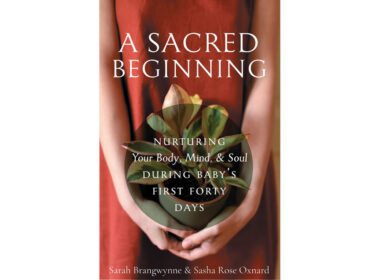Have you ever heard of uterine fibroids? If you have, it’s likely because you’ve been diagnosed with them or perhaps have a family history of fibroids. Fibroids are non-cancerous, benign tumors that grow inside the uterus in the muscle layer, or the myometrium. By age fifty, up to 80% of women may have at least one or more fibroids growing in their uterus.
Why should you care about fibroids?
Fibroids are most commonly found in women in their 40s and 50s. They are also significantly more common in black women than in white women, While many fibroids are painless, growing fibroids can cause uncomfortable symptoms like abdominal pain during and outside of periods, frequent urination or incontinence, unusual bleeding, back pain or pain during sex, and heavy menstrual periods. For some women, fibroids make it hard to get pregnant or cause problems during pregnancy.
The major impact fibroids can have on a woman’s quality of life might lead her to seek invasive surgical or side effect-causing medical treatments that relieve symptoms, but don’t cure what’s wrong. Because of this, better understanding of and research into uterine fibroids and how to prevent them is critical.
A study designed to find an association between high blood pressure and fibroids
There is growing medical evidence that high blood pressure (also called hypertension) and other heart-related conditions may be associated with fibroids [1]. Fibroids depend on the blood supply to the uterus to grow, and so there may be connections with other health conditions involving the blood supply and heart function. High blood pressure develops when blood moves through your arteries with higher than normal force, which can affect blood supply to certain organ systems, as well as lead to heart attack and stroke.
While an association between hypertension and uterine fibroids has been identified, we don’t yet understand the underlying cause or the nature of the correlation. In order to identify the associations between women who had high blood pressure and women with fibroids, in 2024, one group of investigators analyzed data pulled from the SWAN study of over 2,500 middle-aged American women [2]. The study was a prospective longitudinal study where participants were tracked over 13 visits. This type of study provides better quality data compared to sampling women at just one or two points in time.
The average research participant
The women in this study were not pregnant or breastfeeding, not taking hormonal medications like birth control (which can raise blood pressure), had a uterus and at least one of their ovaries, and had had a menstrual cycle in the last three months. The average age of the participants was 45, and none had any history of fibroids. The women were followed for 13 semi-annual visits from 1998 through 2013, and 1) were screened for high blood pressure and 2) asked about any new fibroid diagnoses at each visit with the research team.
What researchers measured
Investigators measured blood pressure and body mass index (BMI) at each visit. They also took blood samples to measure C-reactive protein (CRP, a measure of inflammation), cholesterol, and triglycerides at some visits. Finally, participants were asked about any medications they were taking to treat high blood pressure.
The women were asked about their fibroids at the initial visit (“Has a doctor, nurse practitioner or other health care provider ever told you that you had fibroids, benign growths of the uterus or womb?”) and follow-up visits (“Since your last study visit, have you had fibroids (benign growths in the uterus or womb)?”).
What the investigators found out about high blood pressure and fibroids
By the end of the study, 20 percent of the women in the study reported a fibroid diagnosis. The investigators found associations for fibroid risk in four groups of women:
- Women who developed hypertension (referred to as new-onset hypertension) during the study period had a 45% increased risk of new fibroids compared to women who didn’t develop high blood pressure;
- Women who were not treating their hypertension had a 19% greater risk of new fibroids compared to those without hypertension;
- Women with hypertension who were being treated with blood pressure medicines had a 20% lower risk of fibroids compared to women without hypertension;
- Women with hypertension who were on blood pressure medicine had a 37% lower risk of fibroids compared to women with untreated hypertension.
None of the blood markers (such as cholesterol) or BMI were associated with a risk of fibroids.
The researchers summarized their results as follows: the greatest risk for developing fibroids came from high blood pressure developed during midlife, especially if it went untreated with medicine(s).
[the study found] the greatest risk for developing fibroids came from high blood pressure developed during midlife, especially if it went untreated with medicine(s).
In other words: developing high blood pressure can increase your chances of developing fibroids, but treating your high blood pressure can reduce your risk even compared to women with normal blood pressure.
But did researchers exclude the group most prone to fibroids?
These study results should be taken with a grain of salt, however. The researchers focused only on middle-aged women, and fibroids can develop before midlife, especially in black women [3,4]. In fact, black women are disproportionately affected by fibroids and more likely than other ethnic groups to have high blood pressure. But because the study excluded women who already had fibroids, many black women were excluded, ultimately representing only 25% of the eligible participants. From this study, we can’t understand how high blood pressure could contribute to fibroids that started growing slowly before midlife, or before high blood pressure was diagnosed. It could be the case, for example, that hypertension makes fibroids grow faster.
To rectify this study’s limitations, future randomized controlled studies could specifically recruit black women participants with or without fibroids at baseline to see if hypertension makes their fibroids grow faster. Unfortunately, while randomized controlled studies are the most rigorous, they’re also the most difficult to recruit participants for, due to length of time and associated costs.
The bottom line on the link between high blood pressure and fibroids
Based on this research, it may be appropriate to treat middle-aged women with a new high blood pressure diagnosis proactively to reduce their fibroid risk. Medication certainly isn’t the only (and needn’t be the first) way to treat high blood pressure. And even if medication is necessary, lifestyle changes like increasing exercise (both aerobic activity and strength training!) as well as eating whole, unprocessed foods may help keep the medication dose low.
Importantly, we still don’t know why hypertension is associated with increased risk for fibroids. More studies are needed to clarify the connection between high blood pressure and uterine fibroids.
References:
[1] Kirschen, G. W., AlAshqar, A., Miyashita-Ishiwata, M., Reschke, L., El Sabeh, M., & Borahay, M. A. (2021). Vascular biology of uterine fibroids: connecting fibroids and vascular disorders. Reproduction, 162(2), R1-R18. [2] Mitro SD, Wise LA, Waetjen LE, et al. Hypertension, Cardiovascular Risk Factors, and Uterine Fibroid Diagnosis in Midlife. JAMA Netw Open. 2024;7(4):e246832. doi:10.1001/jamanetworkopen.2024.6832 [3] Wise LA, Laughlin-Tommaso SK. Epidemiology of uterine fibroids: from menarche to menopause. Clin Obstet Gynecol. 2016;59(1):2-24. doi:10.1097/GRF.0000000000000164 [4] R.G. Radin, L. Rosenberg, J.R. Palmer, Y.C. Cozier, S.K. Kumanyika, L.A. Wise, Hypertension and risk of uterine leiomyomata in US black women, Human Reproduction, Volume 27, Issue 5, May 2012, Pages 1504–1509, https://doi.org/10.1093/humrep/des046







Blacks tend to get keloids as well—don’t know if that is related?